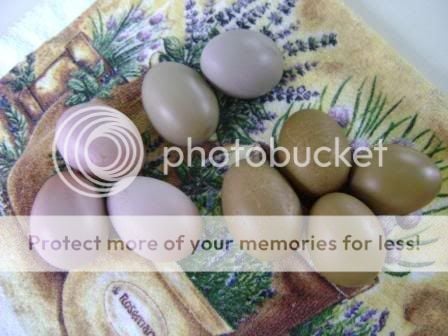sloshy is a good description...I've noted detached air cells on shipped eggs...I wonder if the egg didn't develop because the air cell was detached (which definitely complicates incubation and hatching if a chick develops) or if the air cell detaches as the embryo dies and the yolk begins to decompose....I've seen that dark blob/bubble too on failed eggs. And somebody probably has given it an official name...but sloshy works well for me.
Yes...I am looking forward to some brooding times soon.
I've got a long wish list for this spring...AND I hope to perfect fostering with feed store chicks, the planned purpose of those Cochins, as I need to replace some aging commercial RSL's and add some specialty breeds that none of the local breeders carry. I try to keep half my flock in the commercial GSL/RSL and the other half in the fun breeds...that way I get EGGS but still have fun....I am finding my fun breeds are fun, but so-so layers...and I have about 4 fat hens that are taking in the feed but not producing...so there will be a major shifting this spring. (I have a friend with a big farm that likes my older hens as she likes the larger size egg the mature hen lays...albeit less frequently...we call it retiring to the Happy Hen Home.)
I'm hoping to replace my Welsummers (one age rotated out, one died of heat this summer), add some Olive Eggers, swap out my EE's (unless they come off their molt and produce some decent quality eggs) and a Croad Langshan....I am really trying to get a Monet palette of colors for my egg basket to enjoy, sell, and give as house warming gifts...and do another Buckeye project to bring the roosters to a better meat weight (I had to process too early as I went back to TN for my daughter's new baby at the time I would have normally processed them.)
My dream basket, courtesy of BYC Member Ruth (who is an inspiration to me) from the Purple Egg thread:
https://www.backyardchickens.com/t/273406/purple-eggs/140
Now for somebody to go broody....waiting...waiting...waiting
Lady of McCamley







